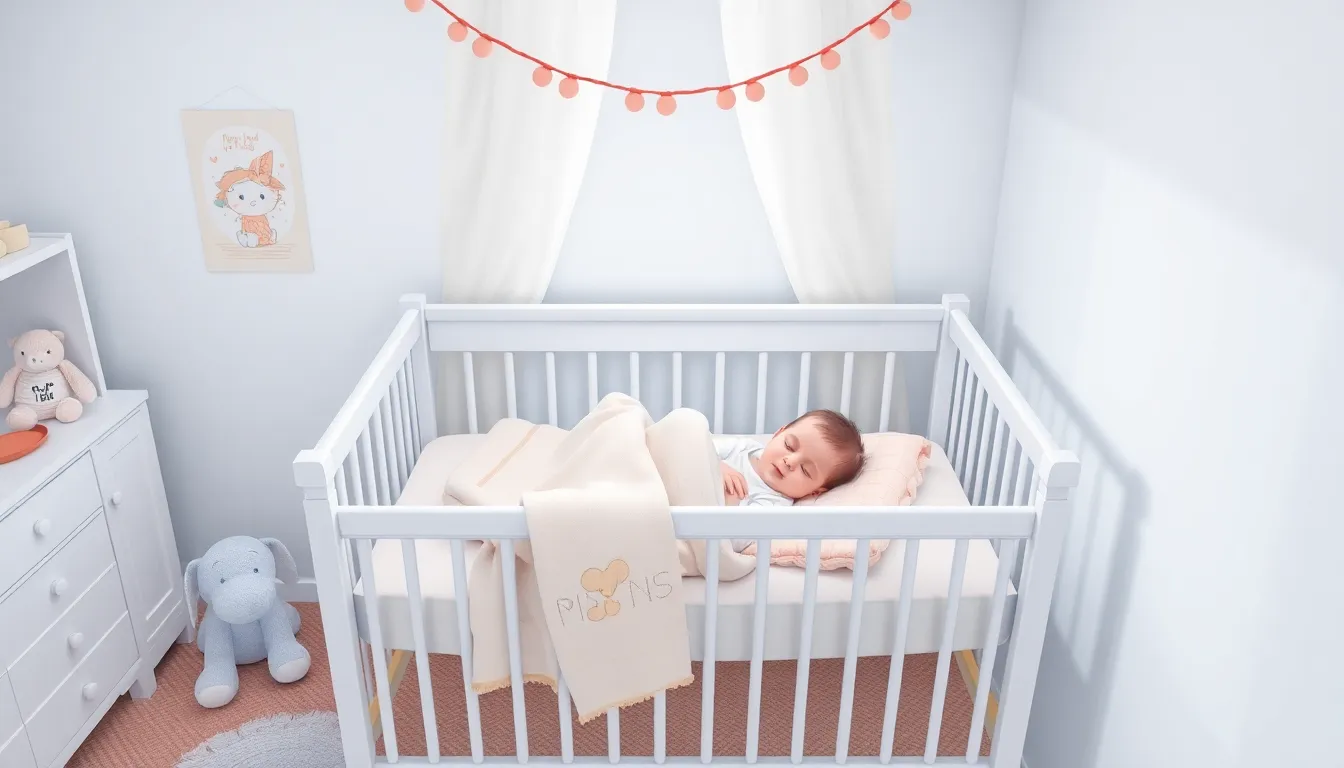Table of Contents
ToggleEvery parent knows that the sounds a baby makes while sleeping can be as entertaining as a late-night comedy show. From adorable snorts to curious grunts, these noises can leave parents both amused and slightly concerned. What do all these baby sleep noises mean? Are they dreaming of pacifiers or plotting their next midnight snack?
Understanding Baby Sleep Noises
Parents often notice a range of sounds while their babies sleep. Recognizing these noises helps in understanding normal sleep patterns.
Common Types of Noises
Grunts characterize many sleep sessions for infants. Whining occurs frequently and can indicate discomfort. Squeaks emerge as babies transition between sleep cycles. Chirps showcase the playful nature of babies even during rest. Other sounds, such as whimpers or coos, often arise as part of dreaming or active sleep.
Causes of Sleep Noises in Babies
Sleeping infants experience crucial phases, leading to various noises. Sleep cycles include light and deep sleep, with the former being more noisy. Reflexes play a role; they can trigger sounds as babies move or change positions. Gas buildup often results in grunting or fussing. Dreams may evoke vocal responses, indicating mental activity during rest.
The Importance of Baby Sleep Noises

Baby sleep noises play a significant role in understanding infant development and ensuring safety during sleep. Recognizing these sounds can help caregivers respond appropriately to their baby’s needs.
Developmental Insights
Sleep noises offer key insights into a baby’s growth and development. Grunts can indicate transitioning between sleep stages, while coos or squeaks suggest comfort and relaxation. Each sound reflects activity levels, helping parents gauge their child’s restful state. Newborns show varied sleep patterns, which evolve over time. Monitoring these noises allows parents to learn about their child’s sleep cycles and overall health. Observing such behaviors reinforces parents’ ability to nurture their child’s development effectively.
Sleep Safety Considerations
Awareness of sleep noises contributes to a safer sleep environment. Sudden changes in sound might signal distress, prompting parents to check on their baby. Proper sleep positioning can mitigate risks like suffocation or choking. Parents should ensure cribs are free of soft bedding, pillows, or toys that could obstruct the baby’s breathing. Creating a calm sleep environment supports better rest while maintaining safety. Understanding sounds allows parents to differentiate normal noises from those requiring immediate attention.
How to Respond to Baby Sleep Noises
Recognizing baby sleep noises aids in understanding their needs. Parents can respond appropriately based on the specific sounds their baby makes.
Gentle Interventions
Gentle strategies can soothe a baby during sleep disturbances. Drawing attention to soft touches, patting their back promotes comfort. Speaking in hushed tones reassures the baby without waking them. Offering a pacifier can help settle them back to sleep. Avoiding abrupt movements prevents startling the baby awake. Adjusting the room’s environment, such as dimming lights or reducing noise, enhances comfort. Creating a consistent sleep routine helps the baby feel secure, reducing the frequency of disturbances over time.
When to Seek Help
Seeking help becomes crucial if the sleep noises indicate distress. Persistent coughing or wheezing may signal respiratory issues. If grunting accompanies signs of discomfort, consulting a pediatrician is advisable. Noticing changes in sleep patterns, such as excessive fussiness or prolonged crying, warrants attention. Discussing concerns regarding unusual noises with a healthcare professional ensures proper evaluation. Documenting the types and frequency of noises can assist in addressing issues effectively. Remaining vigilant about health signs helps keep the baby safe during sleep.
Tips for Promoting Better Sleep
Creating a suitable sleep environment can significantly improve a baby’s rest.
Creating a Sleep-Friendly Environment
A dark, quiet room promotes better sleep quality. Light-blocking curtains reduce external light, while white noise machines or fans mask disruptive sounds. The optimal room temperature should range between 68°F and 72°F, balancing warmth and ventilation. Soft, comfortable bedding contributes to a cozy atmosphere, ensuring the baby’s comfort. Keeping the crib free of toys or loose bedding enhances safety during sleep. A gentle aroma, such as lavender, can also foster relaxation, helping the baby drift off peacefully.
Establishing a Sleep Routine
Consistency in bedtime helps babies recognize when to sleep. Following a soothing wind-down process signals the start of sleep. Activities like reading a book, singing lullabies, or bathtime promote relaxation and form positive sleep associations. Aim for the same bedtime each night, as predictability reduces anxiety and fosters security. Gradually introducing sleep cues, like dimming lights or using a specific blanket, reinforces the routine. Babies thrive on repetition, so maintaining a structured schedule encourages healthier sleep patterns over time.
Understanding baby sleep noises is essential for parents navigating the early stages of their child’s development. These sounds offer valuable insights into a baby’s sleep patterns and emotional states. By recognizing the different types of noises and their meanings, caregivers can respond effectively to their baby’s needs.
Creating a supportive sleep environment and establishing a consistent routine can significantly enhance a baby’s comfort and overall sleep quality. Parents should remain attentive to changes in their baby’s sounds, as they can indicate necessary adjustments or potential concerns. Embracing these aspects of baby sleep can lead to a more peaceful experience for both baby and parent.







